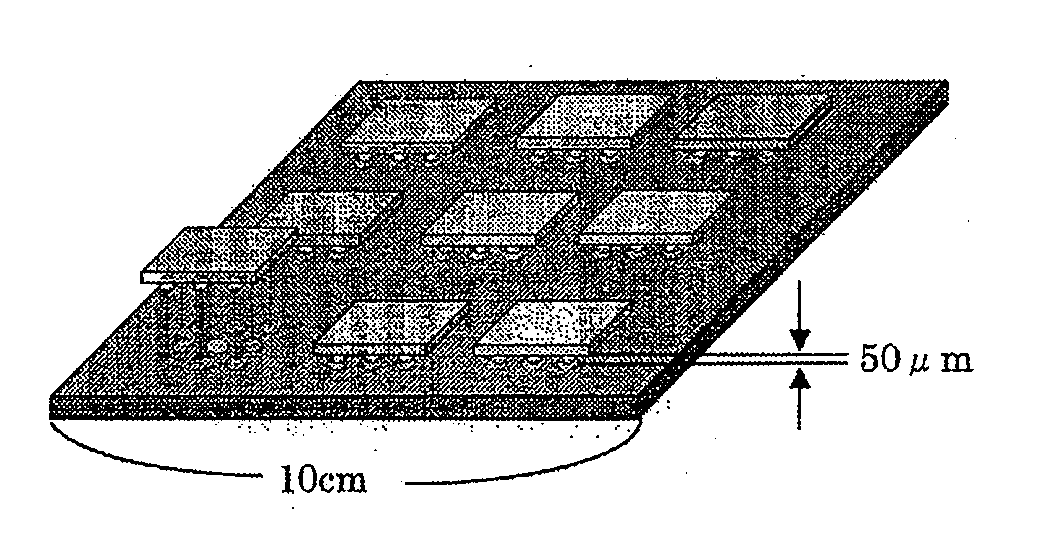Cleaner composition for removing lead-free soldering flux, and method for removing lead-free soldering flux
a technology of flux and cleaner, which is applied in the direction of cleaning using liquids, instruments, photomechanical equipment, etc., can solve the problems that the above-mentioned cleaner cannot adequately remove flux residues on micrometer-level portions or in micrometer-level narrow gaps, and the cleaning effect of the cleaner is not sufficient, so as to reduce the recontamination of objects, improve the cleaning effect, and facilitate the water-rinsing process.
- Summary
- Abstract
- Description
- Claims
- Application Information
AI Technical Summary
Benefits of technology
Problems solved by technology
Method used
Image
Examples
examples
[0070]The present invention is more specifically explained below in reference to Examples and Comparative Examples. The present invention is, however, not limited to the examples.
[0071]Preparation of Cleaner Composition
[0072]The components shown in Table 1 below (based on wt. %) were mixed to prepare the respective cleaner compositions of Examples 1 to 16 and Comparative Examples 1 to 5.
TABLE 1(A)(B)(C)OthersBDGHeDGEDGAMBDCAMAPAWaterEDTA212C208BVisExample 193.01.50.559.2Example 293.01.50.559.4Example 394.00.90.159.3Example 493.41.50.159.4Example 594.00.90.159.3Example 692.01.50.5519.7Example 762.031.01.50.557.4Example 831.062.01.50.556.3Example 946.546.51.50.556.8Example 1046.546.51.50.556.8Example 1146.546.51.50.557.0Example 1247.047.00.90.156.8Example 1347.047.00.90.156.9Example 1446.046.01.50.5517.0Example 1546.046.01.50.5517.0Example 1643.549.51.50.5510.1Comparative47.547.00.556.7Example 1Comparative47.047.0516.8Example 2Comparative93.51.559.1Example 3Comparative44.049.51.5510.1...
experiment 1
Evaluation of Gap-Cleaning Property
[0082]The model cell was immersed in the cleaner composition (liquid temperature=70° C.) according to Example 1. The model cell was taken out of the cleaner composition after ten minutes of stirring, and the total area of the portions where the flux dissolved through both openings (the total area is hereinafter referred to as a dissolution area (mm2)) was calculated. The same experiment was carried out for the compositions of Examples 2 to 16, and the compositions of Comparative Examples 1 to 5.
[0083]A larger dissolution area denotes a greater property of dissolving flux residue in the narrow portion of the object to be cleaned.
experiment 2
Evaluation of Contamination Prevention Property
[0084]The lead-free soldering flux was dispersed in the cleaner composition of Example 1 (1 wt. % per cleaner) to prepare a test liquid (contaminated liquid). The test liquid was dispersed in ion exchange water (rinse liquid) by stirring so that the concentration of the test liquid gradually became 1 wt. %, 3 wt. %, and 5 wt. %. The turbidity of the dispersion liquid at each concentration was evaluated visually using the following criteria. The same experiment was carried out for the compositions of Examples 2 to 16, and the compositions of Comparative Examples 1 to 5.
[0085]The presence of turbidness was used as an index of recontamination of the object during the water-rinsing process. Table 2 shows the results.
A: Dispersion liquid was transparent.
B: Dispersion liquid was slightly cloudy.
C: Dispersion liquid was significantly cloudy.
PUM
 Login to View More
Login to View More Abstract
Description
Claims
Application Information
 Login to View More
Login to View More - R&D
- Intellectual Property
- Life Sciences
- Materials
- Tech Scout
- Unparalleled Data Quality
- Higher Quality Content
- 60% Fewer Hallucinations
Browse by: Latest US Patents, China's latest patents, Technical Efficacy Thesaurus, Application Domain, Technology Topic, Popular Technical Reports.
© 2025 PatSnap. All rights reserved.Legal|Privacy policy|Modern Slavery Act Transparency Statement|Sitemap|About US| Contact US: help@patsnap.com



